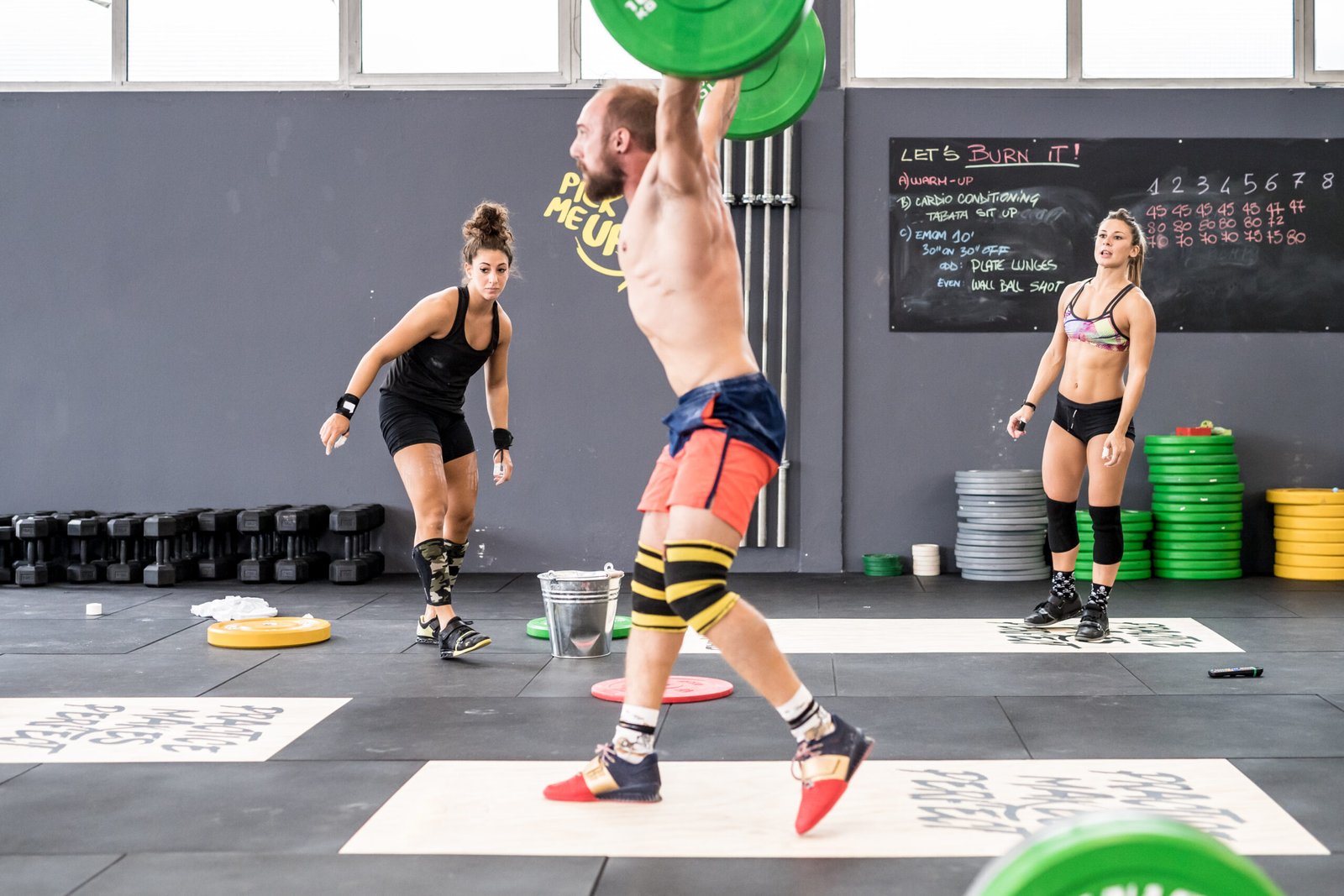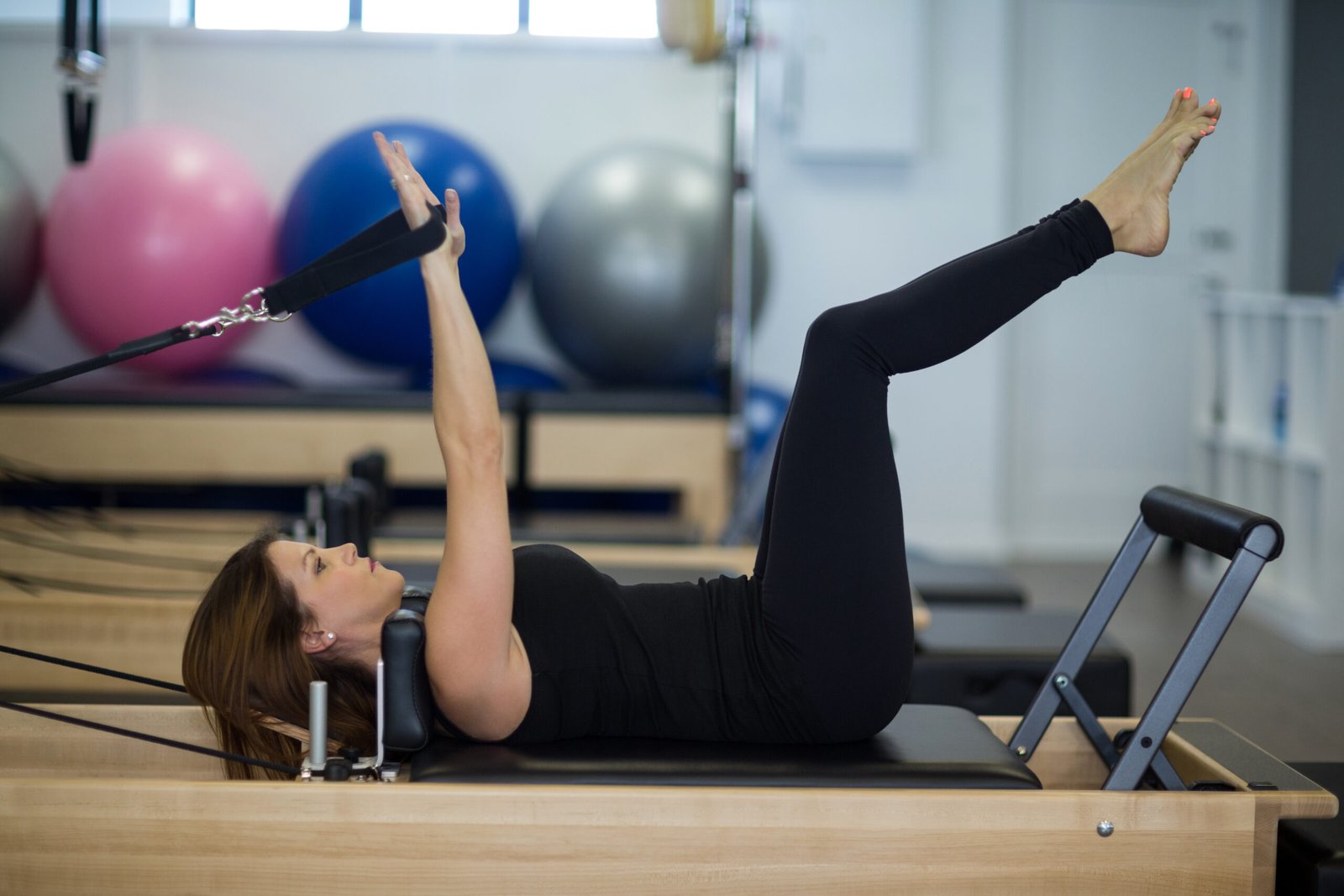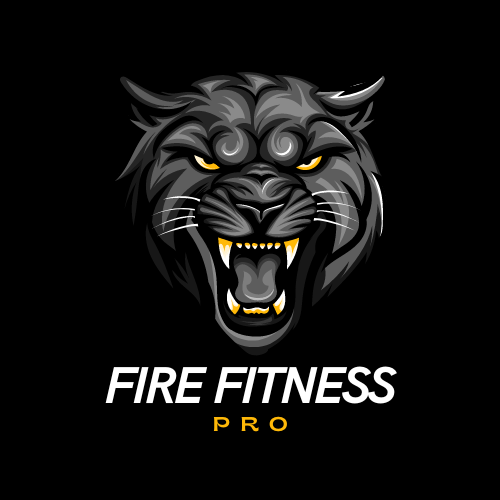In today’s fast-paced world, balancing productivity and creativity at work can be a challenging feat. However, incorporating certain exercise routines, like HIIT (High-Intensity Interval Training), can make a significant difference. In this blog post, we’ll explore how HIIT can boost your creativity and productivity, leading to surprising improvements in your workday efficiency. The principles of HIIT don’t just apply to physical fitness but can also be adapted to enhance mental clarity, motivation, and overall workplace performance. Get ready to discover how these short and intense bursts of exercise can transform your professional life.
Boost Your Productivity With a Big HIIT
| Benefit | Description |
|---|---|
| Inspired concentration | HIIT helps improve focus, allowing employees to dedicate more time to important tasks. |
| Greater motivation | The endorphin release during HIIT boosts motivation and enthusiasm for difficult projects. |
| Enhanced energy levels | Regular HIIT sessions help maintain higher energy throughout the day. |
| Improved problem-solving | Mental clarity achieved through HIIT aids in creative problem-solving. |
| Efficient workouts | HIIT offers quick yet effective sessions, allowing employees to stay fit without interrupting work schedules. |
HIIT is well-known for its physical benefits, but its impact on the mind is equally transformative. It enhances mental clarity by alleviating mental fatigue and sharpening focus, crucial for anyone in a demanding work environment. The key to HIIT’s effectiveness is its ability to stimulate endorphin release, providing a natural boost in mood and motivation, which translates into increased enthusiasm for work. This mood enhancement, coupled with improved cardiovascular health, leads to higher physical energy levels, enabling sustained focus and creativity throughout the workday. Regular incorporation of HIIT into your routine can also enhance cognitive functions, fostering innovative thinking and problem-solving skills necessary for workplace creativity.
– Inspired concentration during work tasks
– Greater motivation and enthusiasm for challenging projects
– Enhanced energy levels for longer-lasting performance
– Improved problem-solving abilities and innovative thinking
– Efficient workout sessions that don’t compromise your schedule
By embracing HIIT, you’re not only investing in your physical well-being but also in creating the mental conditions necessary for exceptional productivity and creativity at work.
What is the best work/break time interval to use?
principles.
| Interval Type | Work Duration | Break Duration | Effectiveness |
|---|---|---|---|
| Pomodoro Technique | 25 minutes | 5 minutes | Great for focus on short tasks, prevents mental fatigue. |
| 52/17 Method | 52 minutes | 17 minutes | Ideal for longer tasks, promotes sustained focus and creativity. |
| HIIT Work Interval Model | 15-30 minutes | 5-10 minutes | High-intensity work followed by recovery to rejuvenate focus and creativity. |
| Custom Interval Model | Varies based on personal preference | Varies | Flexibility to find the perfect balance between work intensity and rest. |
One of the unique attributes of HIIT is its structured intervals of activity and rest, a principle that can be beneficially applied to work. The Pomodoro Technique, for example, suggests working for 25 minutes followed by a 5-minute break, creating a rhythm that boosts focus and prevents burnout. Recent studies suggest longer intervals, like 52 minutes of work followed by 17 minutes of break, may optimize productivity. By alternating between periods of intense focus and rest, similar to HIIT, you can increase creativity and efficiency, leading to better task execution.
– Tailoring intervals to personal preferences boosts motivation
– Experimenting with timings helps identify optimal work patterns
– Applying HIIT-inspired intervals enhances focus and creativity
– Structured breaks can aid in problem-solving and idea generation
– Customized intervals ensure sustained productivity throughout the day
Engaging in these regular breaks not only enhances focus and prevents fatigue but also mirrors the dynamic energy of HIIT, fostering a more productive and creative work environment.
How should I track intervals?
| Tracking Method | Description |
|---|---|
| Fitness Trackers | Devices like Fitbit or Apple Watch monitor your activity levels and rest periods. |
| Smartphone Apps | Apps like Strava or Interval Timer allow precise tracking of both active and rest intervals. |
| Manual Tracking | Keep a journal to note work and break times, adjusting based on performance. |
| Online Interval Timers | Use websites that create custom timers for your HIIT intervals, ensuring consistency. |
Incorporating HIIT principles into work involves accurate tracking of your intervals to optimize effectiveness. Fitness trackers or smartphone apps are excellent tools for this purpose, allowing you to monitor your active and rest periods precisely. By setting specific durations for these intervals, you can tailor your routine to meet personal goals, whether they aim at fitness or work productivity. Recording and analyzing performance data helps identify patterns and areas for improvement, ultimately enhancing your productivity and creative output over time.
– Utilize technology like fitness trackers or apps for easy monitoring
– Set clear goals for active and rest durations within your routine
– Keep a consistent tracking schedule for accountability and improvement
– Use feedback for balancing intensity and recovery
– Adapt intervals based on tracked data for continued gains
Through consistent tracking and adjustment, you can better harness the power of HIIT methodologies, ensuring a productive balance of focus and recovery in your daily work life.
Will using intervals really increase my productivity?
| Benefit | Impact on Productivity |
|---|---|
| Intensity bursts | High-effort work periods increase focus, providing more energy and motivation. |
| Prevention of burnout | Regular breaks during intervals keep energy levels high, preventing fatigue. |
| Structured problem-solving | The interval method encourages systematic approaches to solving challenges. |
| Efficient task management | Task prioritization becomes easier as intervals help organize work into focused blocks. |
| Discipline and focus | Intervals foster discipline, ensuring consistent high-quality work. |
Absolutely, adopting interval techniques modeled after HIIT can significantly enhance productivity. By incorporating bursts of intense focus followed by short rest periods, you maintain high energy levels and motivation, preventing burnout. This method not only enhances your ability to manage tasks efficiently but also fosters creativity by encouraging structured problem-solving and idea generation. Implementing regular intervals improves time management, allowing for more efficient task completion and prioritization. Overall, these techniques foster discipline and focus, leading to sustained improvements in work performance and output quality.
– Intensity bursts boost energy and motivation
– Helps prevent burnout and sustain mental energy
– Encourages creativity through structured problem-solving
– Aids in efficient task management and prioritization
– Cultivates discipline and focus, resulting in enhanced work quality
The interval approach is not only a catalyst for productivity but also a method that ensures a balanced and regenerative work environment.
HIIT your goals!
| Goal | Description |
|---|---|
| Elevating energy levels | HIIT sessions release endorphins, leading to sustained energy throughout the day. |
| Reducing work-related stress | The mood-boosting benefits of HIIT decrease workplace stress. |
| Improving time management | HIIT’s time efficiency teaches you to manage your workday better. |
| Boosting mood and cognitive function | HIIT increases dopamine, which enhances mood and productivity. |
| Preventing burnout | Regular physical activity during HIIT prevents mental fatigue and burnout. |
Engaging in High-Intensity Interval Training (HIIT) offers a multitude of benefits that extend beyond physical fitness, directly impacting your professional life. It elevates energy levels and reduces work-related stress, creating a conducive environment for creativity. By enhancing mental clarity and focus via neuroplasticity stimulation, HIIT is crucial for innovative thinking. It also improves time management skills, allowing you to complete tasks more efficiently. One of HIIT’s most significant advantages is the release of endorphins and dopamine, naturally boosting mood and cognitive function. Incorporating this practice includes regular physical activity breaks, which prevent burnout and sustain high productivity levels.
– Elevates energy and reduces stress, fostering creativity
– Enhances focus through neuroplasticity
– Improves time management for efficient completion of tasks
– Boosts mood with endorphin and dopamine release
– Promotes active breaks preventing burnout
These aligned benefits make HIIT an invaluable tool not only for achieving fitness goals but also for elevating workplace performance and creativity.
Where, oh where is the time?
| Benefit | Time Management Impact |
|---|---|
| Efficient workouts | HIIT offers a quick workout option, saving time while boosting productivity. |
| Increased mental clarity | The clarity gained from HIIT sessions helps you better prioritize and manage tasks. |
| Sustained focus | Higher energy levels from HIIT maintain your focus throughout the day. |
| Reduced stress | By minimizing stress, HIIT ensures a calmer approach to time-sensitive tasks. |
| Easily fits into schedules | HIIT’s short duration ensures it can be done between meetings or during lunch breaks. |
Time management is a common challenge in today’s hectic work world, but HIIT offers a unique solution. High-Intensity Interval Training allows for effective workouts in shorter durations compared to traditional exercise routines. Incorporating HIIT into your daily regimen doesn’t just boost physical performance; it also enhances mental clarity, leading to improved creativity and problem-solving skills. The increased energy levels from these sessions enable sustained focus and productivity throughout the workday, all while reducing stress and improving mood, creating a positive work environment that encourages innovation.
– Effective workouts with minimal time investment
– Enhances mental clarity and creativity
– Boosts sustained energy and focus through the day
– Reduces stress, improving the workplace environment
– Seamlessly integrates into busy schedules
With HIIT, time can be maximized efficiently, serving both fitness and work performance goals without one detracting from the other.
Make time for HIIT
To reap the cognitive benefits of HIIT without sacrificing work hours, it’s important to establish a routine that includes short, intense workouts. These workouts boost brain function and creativity by increasing blood flow and oxygen to the brain. Incorporating such workouts into your routine leads to improved focus, sharper problem-solving skills, and increased productivity. Studies have shown that HIIT reduces stress levels and elevates endorphins, enhancing mood and aiding creative thinking. The time-efficient nature of HIIT ensures you can benefit cognitively without compromising on your work commitments.
– Regular short workouts improve focus and problem-solving
– Enhances creativity through increased brain oxygenation
– Decreases stress, promoting well-being
– Fits into busy schedules with ease due to time efficiency
– Sustained energy levels and mental clarity improve task management
By making time for HIIT, you create a dynamic work environment conducive to innovative thinking and efficient task execution.
Intervals of focus
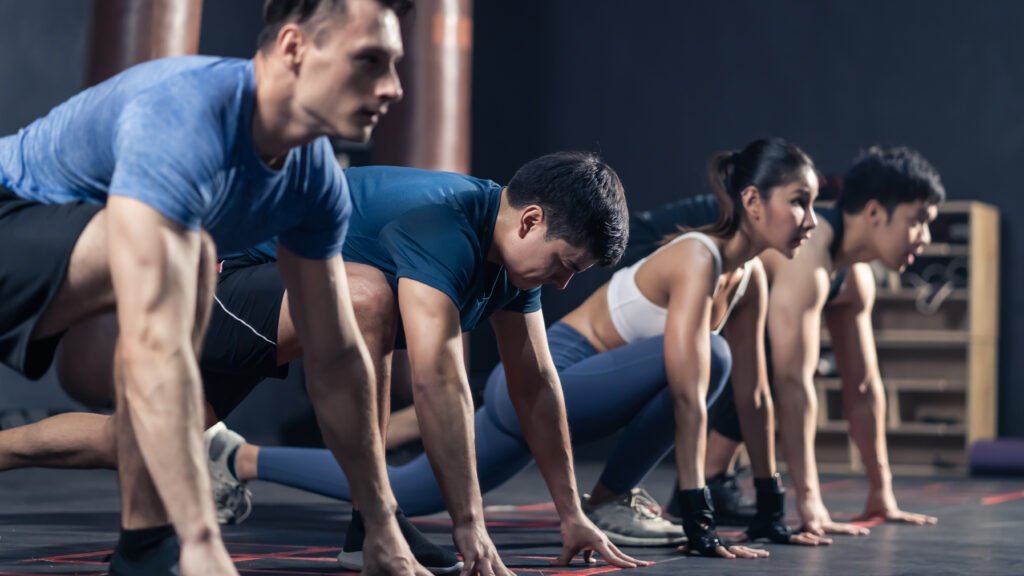
HIIT’s methodology of balancing high-intensity activity with rest can optimize physical and mental performance. These intervals can mirror work patterns, which enhances cognitive function and sharpens problem-solving abilities during demanding work scenarios. Engaging in HIIT boosts endorphin levels, leading to improved mood and greater creative output. Moreover, the time-efficient nature of these workouts makes it easy to incorporate them into busy workdays, maximizing productivity without sacrificing professional commitments, offering sustained energy levels that enable prolonged focused work.
– Mirrors work patterns for enhanced cognitive function
– Sharpens problem-solving during high-pressure tasks
– Increases endorphin levels for mood and creativity boosts
– Fits easily into demanding schedules
– Sustains energy for prolonged periods of concentration
Regular HIIT practice aligns physical fitness with cognitive enhancement, ensuring both body and mind are equipped to tackle professional challenges with efficiency and creativity.
How to pick the intervals
Choosing the right HIIT intervals involves understanding your current fitness level and setting realistic goals tailored to personal capabilities and work demands. Starting with a warm-up prepares your body and mind for the intensity to follow, enhancing the overall effectiveness of the workout. Select interval durations that align with your fitness and productivity needs, whether it’s shorter bursts for quick energy or longer ones for sustained endurance. A balance between active and rest periods is key to effective recovery, aiding in maintaining creativity and focus. Over time, gradually adjust the intensity and duration of intervals to match improvements in fitness and workplace performance.
– Determine fitness levels and set personalized goals
– Warm-up to prepare for intensity
– Choose appropriate interval durations
– Balance active and rest periods for creativity and focus
– Gradually adjust intervals as performance improves
Tailoring your HIIT sessions ensures that both physical output and workplace productivity benefit, facilitating a holistic growth environment.
7 Steps for using HIIT Methodologies to Drive Employee Performance
High-Intensity Interval Training (HIIT) isn’t just for boosting physical fitness; it can also be adapted to drive employee performance in the workplace. Here’s a step-by-step guide on how you can effectively incorporate HIIT methodologies to enhance productivity and create a dynamic work environment.
| Step | Description |
|---|---|
| 1. Assess Current Performance | Evaluate team performance and identify areas for improvement. |
| 2. Set Clear Goals | Use SMART goals to set measurable and attainable targets for employees. |
| 3. Design Intense Work Bursts | Structure focused work intervals to maximize productivity. |
| 4. Incorporate Breaks | Schedule short rest periods to help employees recover and stay energized. |
| 5. Monitor and Adapt | Regularly assess and modify work intervals based on employee feedback. |
| 6. Foster Continuous Improvement | Encourage skill development and a growth mindset among employees. |
| 7. Celebrate Milestones | Recognize employee achievements to boost morale and motivate further success. |
Step 1: Assessment of Current Performance Baselines
Begin by evaluating the current performance levels across your team. This involves understanding individual strengths, weaknesses, and overall team dynamics. Use performance metrics, feedback sessions, and productivity analytics to create a clear picture of where improvements can be made. Setting performance baselines allows you to measure progress accurately and tailor HIIT strategies to specific needs.
Step 2: Goal Setting
Just as HIIT workouts require specific fitness goals, translating this idea into a corporate setting involves establishing clear and measurable objectives. Define what success looks like for different roles and projects. Ensure that these goals are challenging yet attainable, motivating employees to push their limits. SMART (Specific, Measurable, Achievable, Relevant, Time-bound) goals work wonders in keeping the team focused and driven.
Step 3: Design Intense Work Bursts
Incorporate short, high-intensity work periods throughout the day. These bursts of focused work enable employees to dedicate their energy and attention to tasks without burnout. Techniques such as the Pomodoro Technique, which alternates periods of concentrated work with short breaks, can keep the team invigorated and productive. Encourage employees to tackle the most demanding tasks during these intervals to maximize output.
Step 4: Incorporate Strategic Breaks
After each period of intense work, schedule brief intervals for rest and rejuvenation. These breaks are essential for maintaining long-term productivity, reducing stress, and preventing burnout. Encourage activities that promote relaxation, such as stretching, walking, or short team-building exercises. These strategic pauses allow for mental recovery and refreshment, preparing employees for the next work burst.
Step 5: Monitor and Adapt Work Intervals
HIIT involves varying the intensities and durations of intervals based on progress and feedback. Regularly assess the effectiveness of the work and rest cycles in place. Use team feedback and performance data to adapt the intervals to better suit evolving needs and challenges. Flexibility in altering these parameters ensures that the approach remains engaging and productive.
Step 6: Foster a Culture of Continuous Improvement
An essential aspect of HIIT is the focus on progressive enhancement. Encourage a workplace environment that embraces continuous learning and improvement. Encourage employees to set personal and professional development goals alongside team objectives. Provide resources, workshops, and training sessions to develop skills and maintain the motivation to progress.
Step 7: Celebrate Milestones and Progress
Finally, recognize and celebrate both individual and team achievements. Whether it’s meeting a critical deadline, exceeding performance metrics, or developing new skills, acknowledging accomplishments boosts morale and creates a positive work environment.
1. What is HIIT, and how does it differ from other exercise routines?

HIIT, or High-Intensity Interval Training, is a form of exercise that incorporates short bursts of intense activity followed by brief recovery periods. Unlike traditional exercise routines that emphasize endurance through longer, moderate-paced workouts, HIIT prioritizes maximum effort in compact sessions that typically last between 15 and 30 minutes. This efficient use of time not only delivers significant fitness gains but also promotes mental clarity and focus. One fascinating aspect of HIIT is the afterburn effect, wherein your body continues to burn calories after the workout has ended. This process is a testament to the workout’s intensity, improving cardiovascular health, strength, and endurance, while simultaneously enhancing workplace creativity and productivity.
– Short, intense sessions maximize effort
– Efficient time use with significant fitness benefits
– Afterburn effect continues calorie burn post-exercise
– Enhances cardiovascular health, strength, and endurance
– Boosts mental clarity and focus for workplace benefit
By understanding the mechanics of HIIT, one can fully appreciate its profound impact on both physical and mental capabilities.
2. In what ways can HIIT improve creativity at work?
HIIT has a positive impact on your brain function by increasing blood flow and oxygen levels, fostering a creative mindset. When stress levels are reduced, your mind is calmer, which is conducive to innovative thinking and adept problem-solving. As HIIT improves mood and boosts energy levels, it leads to more dynamic and imaginative performance at work. Additionally, it provides mental breaks from routine tasks, allowing time for fresh perspectives and new ideas to surface. This stimulation of neuroplasticity encourages the formation of new neural connections, thereby enhancing your creative abilities.
– Increases brain blood flow for creativity
– Reduces stress for calm, innovative thinking
– Enhances mood and energy, boosting performance
– Offers mental breaks for new perspectives
– Stimulates neuroplasticity for new neural connections
These transformative qualities of HIIT underscore its value in nurturing creativity and innovation in the workplace.
3. How does HIIT contribute to increased productivity throughout the workday?
HIIT’s beneficial effect on productivity is rooted in its physiological impacts. The intense bursts of activity improve cardiovascular health and foster endorphin production, which leads to enhanced energy levels sustained throughout the workday. This higher energy translates into improved focus and concentration, allowing you to tackle tasks with efficiency and clarity. The stress-reduction effects of HIIT through mood-enhancing hormones create a calm and focused mindset that supports increased productivity. Moreover, the time efficiency of HIIT allows for more flexible work hours, ensuring you can capitalize on these physiological gains without sacrificing professional commitments.
– Bolsters cardiovascular health and endorphin production
– Increases sustained energy throughout the day
– Enhances focus and concentration for task efficiency
– Reduces stress, promoting a positive mindset
– Maximizes schedule flexibility through time-efficient workouts
The relationship between HIIT and productivity highlights its role in creating a balanced, energetic, and focused work environment.
4. Can HIIT be integrated into a busy work schedule without requiring too much time or equipment?
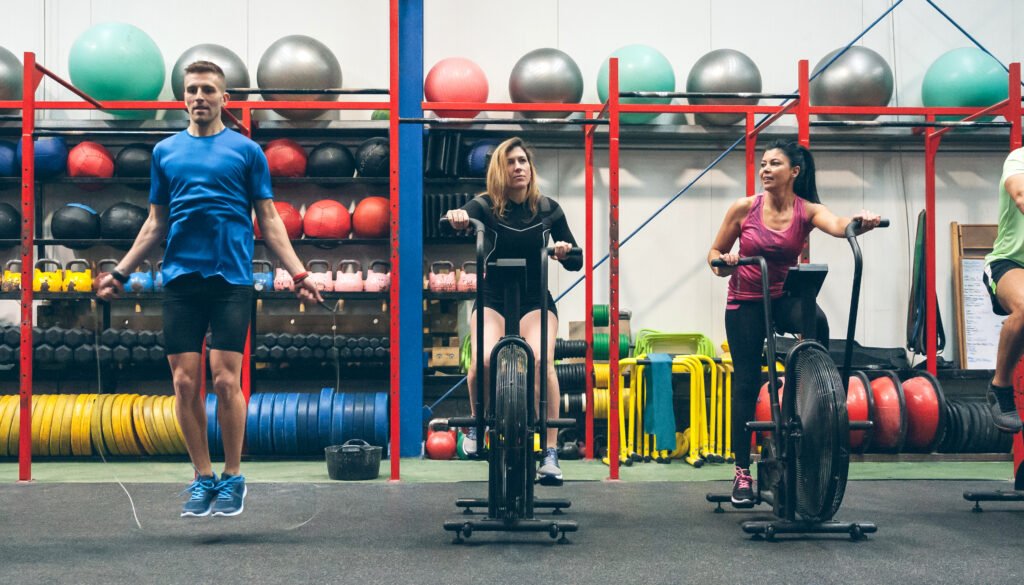
One of HIIT’s most appealing attributes is its adaptability to busy schedules. Typically lasting between 10 to 30 minutes, these workouts can fit into short breaks throughout the day, making them perfect for lunch breaks or meetings’ gaps. The flexibility of HIIT is further enhanced by its minimal equipment requirement—often, no equipment at all—making it accessible wherever you are, be it at home, the gym, or in the office. Incorporating HIIT consistently into your routine enhances physical fitness and mental clarity, which boosts workday creativity and productivity.
– Short duration fits conveniently into busy schedules
– Minimal or no equipment needed for flexibility
– Easily incorporated at home, gym, or office
– Enhances fitness and mental clarity
– Boosts creativity and productivity in professional settings
By seamlessly integrating HIIT into your daily routine, you can enjoy both its physical benefits and the creative, productive advantages it brings to your professional life.
5. Are there any specific types of HIIT exercises recommended for boosting workplace creativity and productivity?
Certain HIIT exercises are particularly effective in enhancing workplace creativity and productivity. Quick routines like sprinting, cycling, and jump rope can significantly clear mental blocks and stimulate innovative thinking. Short, intense bursts of activities, such as burpees and mountain climbers, rejuvenate mental energy, allowing for improved focus on tasks. Group HIIT sessions can also be beneficial as they promote teamwork and collective creative output through increased social interaction. Adaptable exercises requiring minimal equipment, such as bodyweight circuits, are ideal for quick and effective workouts in a professional setting.
– Sprinting and cycling clear mental blocks
– Burpees and mountain climbers rejuvenate energy
– Group sessions foster teamwork and creativity
– Bodyweight circuits for quick, equipment-free workouts
– High-intensity routines stimulate innovative thinking
By incorporating these activities, you can effectively boost creativity and productivity, thus maximizing your overall work performance.

Final Thoughts: Harnessing HIIT for a Productive Workday
High-Intensity Interval Training (HIIT) isn’t merely an efficient exercise regime; it’s a transformative tool for elevating your professional life. By implementing HIIT principles into your daily routine, you can significantly enhance your creativity and productivity at work. From boosting mental clarity and focus to fostering innovative thinking and time management skills, HIIT offers multifaceted benefits. By integrating HIIT into your daily schedule, you can experience a remarkable shift in your work performance. The bursts of intense activity in HIIT sessions are known to increase endorphin levels, which can help improve mood and reduce stress, leading to a more positive and productive work environment. Furthermore, the time-efficient nature of HIIT makes it easy to incorporate into even the busiest of schedules, ensuring that you can reap its benefits without sacrificing your work commitments. Studies also suggest that regular HIIT sessions improve cognitive function, aiding in faster decision making and enhanced problem-solving skills. As a result, HIIT can serve as a powerful catalyst for achieving your career goals, making it an invaluable component of a successful professional journey. Whether you’re looking for a quick mental recharge or a consistent routine to drive long-term professional growth, HIIT offers the mental and physical boost you need to thrive in today’s demanding work environments.
In conclusion, integrating High-Intensity Interval Training (HIIT) into your daily routine can be a game-changer for enhancing creativity and productivity at work. By offering a quick and efficient way to boost physical health, HIIT also stimulates mental clarity and cognitive function. The endorphin rush and increased blood flow experienced during these workouts not only elevate your mood but also enhance your ability to problem-solve and think creatively. As studies continue to highlight the connection between physical well-being and mental performance, incorporating HIIT into your schedule is a practical strategy for achieving a more dynamic and innovative work life. Whether you’re aiming to overcome mental blocks, generate fresh ideas, or simply maintain focus throughout the day, HIIT might just be the catalyst you need for professional excellence. So, lace up your sneakers and get ready to unlock a more creative and productive you.











